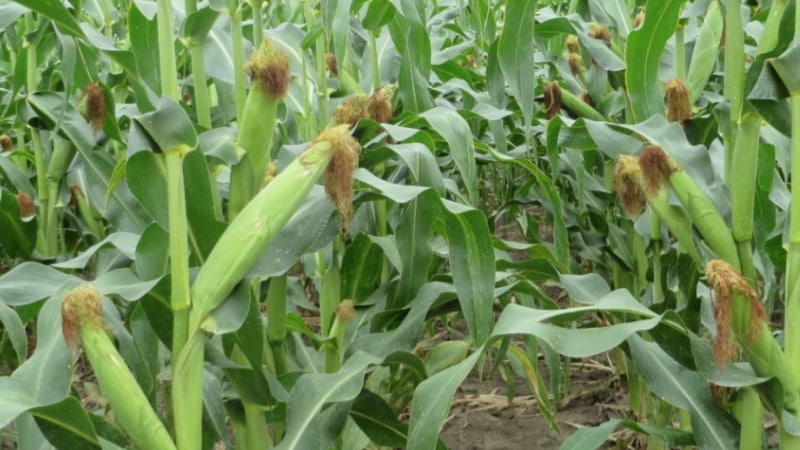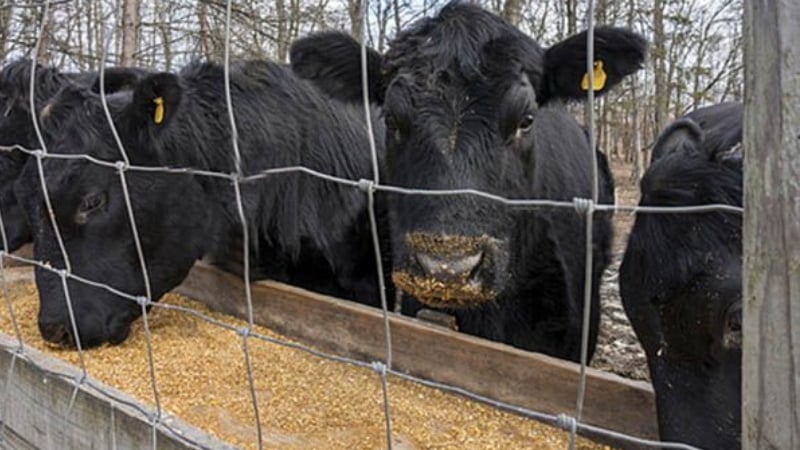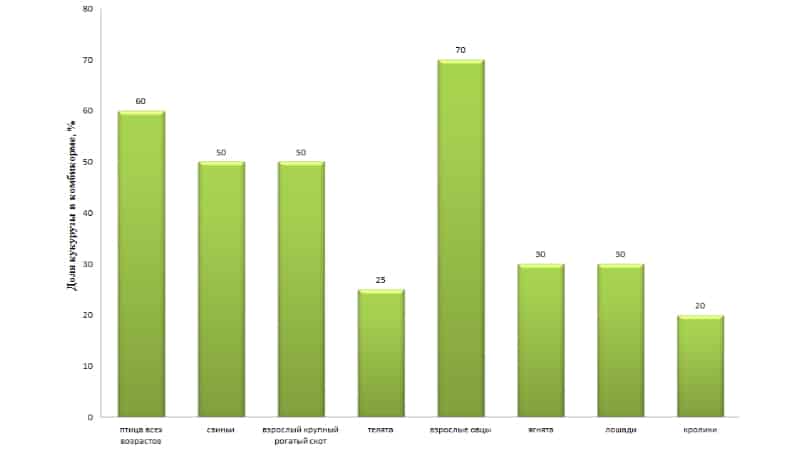What is feed corn, how to distinguish it from food corn and where to use it
Corn is one of the oldest cultivated food grains on our planet, originally from South America. Local aborigines consumed all its parts as food: panicles, pollen, stems and grains.
In Russia it is grown both for grain and silage. Two thirds of the total harvest goes to feed livestock. In various industries, grain, cob cores, and stems are used. How to distinguish a fodder crop from a food crop, what are the specifics of cultivation, storage and use - we will tell you in the article.
How to distinguish feed corn from food corn
Both varieties of corn are edible. Therefore, if you were deceived by selling feed instead of food, do not be upset. Both contain dietary fiber, protein and vitamins. But edible or sweet corn is tastier, which is sweeter and juicier due to the presence of mono- and disaccharides.
Fruits of food grades are not stored for a long time; they are immediately processed, canned, and frozen.
The photo shows fodder corn.

Appearance and taste
Forage crops are distinguished from food crops by the following qualities:
- the color of grains on the cob is from bright yellow to orange, for food grains it is soft beige;
- cooks for a long time - up to three hours, while food - 10-15 minutes;
- the cobs are long and narrow, while those of food are short and thick;
- the skin of the grains is strong, tough, if it bursts when pressed, the juice will not flow, but food grains are tender, soft and juicy;
- tasteless, but food - sweet, juicy and tasty.
Composition and properties of cereal feeds
Among cereal forage crops, corn has a high content of starch - up to 70% and fat - up to 8%. However, corn grains are poor in ash, especially calcium. Protein substances make up about 9-10%. Corn does not contain many vitamins - A, PP, E and group B.
Of all cereals, corn grain has the highest energy value. 1 kg of corn grain contains 10-12 MJ of metabolic energy for cattle, 13.4 MJ for pigs, 14.4 for sheep, dry matter 850 g, crude protein 80-100 g. The digestibility of corn protein by cattle is 64.1 g, pigs - 70.51 g, sheep - 67.31 g, and this is a high figure.
Corn is one of the main parts of feed and feed mixtures suitable for all types of farm animals.
Growing field crops

Corn is an annual cereal, 1-3 m high, with large leaves reaching a meter in length and the width of an adult’s palm.. The corn stalk is filled with a loose pith. The roots of the plant are powerful. Corn also has above-ground roots - supports that increase the support area for the stem.
Humans cultivate more than 20,000 plant species, of which about 90 are field crops. Corn, according to the classification of field crops by Professor P.I. Podgornogo is a grain plant related to millet breads.
What distinguishes millet breads from typical breads is that they are all heat-loving and light-loving short-day plants with high drought resistance and less demands on soil fertility.
Places of growth
The conditions for growing a crop are determined by its origin.
Corn belongs to the Central American genetic center (southern Mexico, Central America, part of the Antilles) with moderate moisture, high temperatures with strong daily and seasonal fluctuations and a moderate growing season.
That is, initially, by origin, corn is not very suitable for growing in temperate latitudes. But as civilization develops, thanks to natural or artificial selection, modern varieties are able to grow and fully ripen in almost any conditions.
Features of growing and using feed corn

Most forage varieties are not demanding on growing conditions and are capable of growing a powerful above-ground part almost everywhere. Corn does not depend on crop rotation; it can grow in the same place for several years in a row.
It is recommended to apply mineral or organic fertilizer to the soil at the pre-sowing stage, depending on the composition and condition of the soil. Before sowing, surface-mechanical and herbicide treatment is carried out.
After emergence, corn requires more frequent fertilizingthan other grains. The need to apply fertilizers is determined based on plant growth parameters and the quality of their above-ground herbaceous parts. It is preferable to “feed” plants using the foliar method, leaf by leaf.
Feed corn is one of the most versatile crops. Flour, starch, glue, ethanol, animal feed, etc. are made from it. In most countries of the world, it is technical (fodder) varieties that are used for manufacturing corn grits.
Areas of application of feed grades
A large number of types of feed are prepared from corn:
- Green food – this is the above-ground part of the plant, mowed at certain phases of development.
- Silage is a succulent food that is prepared by canning greens with limited oxygen access, an alternative to green food in winter. To prepare this type of feed raw material, technical varieties at the stage of waxy ripeness are used.
- Schrot – a mixture of grain, corn cobs and wrappers for fattening pigs and piglets, preparing vitamin brew for birds.
- Corn - feed that is given to cattle and pigs in finely ground form, and to horses and poultry - in the form of derti (coarsely ground).
For which animals are they suitable?

When used rationally, corn is considered the best nutritional supplement for birds and animals raised for fattening. With her participation, fish bait is produced.
For different animals, the rates for adding corn to feed vary.

Attention! If the percentage of corn in the feed is not observed, namely, if there is an excess of corn, the butter in dairy cows becomes soft, the meat in pigs becomes watery, and egg production in laying hens decreases.
Why are they good?
Feeding using corn raw materials is considered the most effective, since the grains of this cereal contain more fat than barley or wheat, with a minimum amount of protein. When feeding freshly harvested corn on the cob to animals, especially horses, the animals eat the corn more slowly and digest it better.
As fattening for pigs and piglets (as well as fattening for meat poultry), technical grade corn can be used in almost any form.
Important! Increasing the corn content in the animals' diet to 15% allows them to endure the cold season more easily.
How to store
Feed corn grain is stored in clean, dry, odorless, non-contaminated pests granaries in accordance with veterinary and sanitary rules and requirements for storage conditions.
The most common storage method is dry, which is based on the principle of xeroanabiosis (cessation of biochemical processes due to partial or complete dehydration). In this case, corn with a moisture content of 12–14% is stored for 4-5 years in storage tanks and 2-3 years in elevator silos.
Reference. Wet grain without drying is stored for a short time, at a humidity of 20% - 6 days, 18% - 4 months, 16% - 9 months.
In practice, feed corn is usually not stored for a long time, but is used immediately for its intended purpose.
Another, no less common way to store corn is refrigerated. It is based on the principle of thermoanabiosis: a decrease in the vital activity of biomass in grain at low temperatures.
Food corn is stored worse than feed corn. The main ways to store it at home on the cob or in grains are freezing and canning. When drying cobs or grains, the taste of the product changes, although corn lasts a long time in this form.
Varieties and hybrids of fodder corn
For industrial cultivation, hybrid seeds are used. They are selected taking into account the parameters of yield and resistance to climatic conditions of different regions, susceptibility to lodging and infection by diseases and parasites.
Forage varieties are less demanding on weather conditions, soils and precursors, unlike food varieties, but still, when choosing, they take into account geographical conditions, disease resistance, intended purpose (for silage, for grain) and other characteristics.
Aurica is considered the best variety of fodder corn. This is an early ripening variety with a stem height of up to 170 cm. The length of the cob is 20 cm, weight is 220 g. Maturation period – 76-80 days. Productivity 1.4-1.8 kg per 1 sq. m. The variety is unpretentious and resistant to diseases.
Hybrids differ from varieties of higher productivity, resistance to diseases and adverse environmental conditions.
The most popular corn hybrids included in the State Register of Breeding Achievements of the Russian Federation:
- Early maturing three-line hybrid Ross 188 MV. Included in the State Register for the Central, North Caucasus and Middle Volga regions for grain and silage, for the Volga-Vyatka for silage, for the Central Black Earth, Lower Volga and Far Eastern regions for grain.
- Three-line early ripening hybrid Nur. Included in the State Register for the Volga-Vyatka region for silage, the Middle Volga region for grain and silage, the Lower Volga (8) region for grain, the Ural (9) region for grain, the Far Eastern (12) region for silage.
- Three-line hybrid Katerina SV. Included in the State Register for the Central Black Earth (5), Middle Volga (7), Ural (9), West Siberian (10) and East Siberian (11) regions.
- Three-line hybrid EU Vulcan. Included in the State Register for the Central Black Earth (5) region for grain and silage.
- Simple hybrid Dolphin. Included in the State Register for the Central Black Earth (5), Middle Volga (7), Lower Volga (8) and Ural (9) regions for grain.
- Three-line hybrid SI Respect. The hybrid is included in the State Register for the Central Black Earth (5) region for grain.
Conclusion
Corn, regardless of whether it is feed or food, is certainly healthy. It contains trace elements, minerals, dietary fiber, vitamins A, PP, E, B. In Russia it is grown both for grain and for silage. The dominant part of the harvest is used to feed livestock.Feed, flour, cereals, canned food, starch, glucose, alcohol and other products are obtained from grains. Cob kernels are used for the production of furfural, xylose, and lignin. Stems are raw materials for the production of cellulose and biofuel.
Fodder corn is less demanding on growing conditions and grows even in the harsh conditions of central Russia. It is not demanding on soil conditions, is drought-resistant and highly productive, which makes it an excellent forage plant.